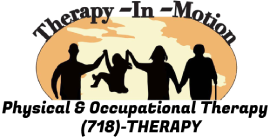
Understanding Tennis Elbow: Causes and Exercises
By: Dr. Abe Kopolovich, DPT, MBA

A Comprehensive Guide to Tennis Elbow: Uncovering the Factors and Effective Exercises
Tennis elbow is one condition that can disrupt our balance, an overuse injury resulting from repetitive activities. Although commonly associated with racquet sports, it is also prevalent among individuals involved in painting, carpentry, and plumbing occupations.
Recognizing the signs and tennis elbow causes is crucial for proper diagnosis and treatment. The American Academy of Orthopedic Surgeons has identified typical indicators, including discomfort and a burning sensation on the outer side of the elbow, as well as weakened grip strength. These symptoms usually develop over several weeks or months.

Non-surgical treatment options are available and can help promoting tennis elbow recovery, such as:
- Rest
- Ice applications
- NSAIDS (such as Advil or Aleve)
- Targeted Tennis Elbow Exercises
- Ultrasound therapy
- Bracing and compression techniques
- Steroid injections
The initial steps in fixing tennis elbow focus on reducing inflammation and allowing the affected muscles and tendons to rest. Ice therapy and compression can also help reduce inflammation and mitigate pain.

Once the inflammation subsides, patients can gradually engage in gentle exercises designed to strengthen the forearm muscles and prevent future recurrences. However, consulting with a healthcare professional or therapist is imperative to determine the appropriate timing for commencing tennis elbow physical therapy exercises.
In some instances, when noticeable flat spots or abnormal shaping persist, additional interventions may be necessary to correct the issue. It is highly recommended to consult a physician to ensure complete assurance regarding the normalcy of an infant’s head shape.
Manual Compression
Improving grip strength is pivotal in overcoming common tennis causes. You can achieve this ability through targeted exercises targeting the long flexor tendons of the fingers and thumb.
To perform this exercise, one can sit at a table with their forearm resting on it, tightly gripping a rolled-up towel or small for ten seconds. This grip can be released and repeated ten times before switching to the other arm.

Using the dumbbells
Another tennis elbow exercise that helps is supination with a 2-pound dumbbell. The supinator muscle, closely linked to the elbow joint, rotates the palm upward and often contributes to the tennis elbow wrist pain.
By holding the equipment vertically in one hand, with the elbow resting on the knee, individuals can let the weight of the dumbbell assist in rotating the arm outward, turning the palm up, and then reversing the motion until the palm faces downward.

Don’t forget your wrists!
Additionally, exercises targeting the wrist extensors and wrist flexors, groups of tiny muscles connected to the elbow, can alleviate tennis elbow wrist pain and inflammation associated with overuse.
These exercises involve holding a 2-pound dumbbell in hand, with the palm facing down for wrist extension and the palm facing up for wrist flexion. Performing these movements ten times on each side while isolating the wrist’s motion can relieve and aid recovery.


Using a normal towel
Another exercise that engages tennis elbow rehab through wrist extensors and flexors is the towel twist. By holding a hand towel with both hands and relaxing the shoulders, individuals can twist the towel in opposite directions as if wringing out water.
This exercise can be repeated ten times in each order, providing a beneficial workout for the wrist extensors and flexors.

Before embarking on any exercise program, it is essential to consult a medical professional. Should pain reoccur following activity, it is advisable to rest the affected elbow and forearm, apply ice and consult with a physical or occupational therapist to ensure the correct execution of tennis elbow exercises.
Modifying how to perform daily tasks can alleviate symptoms, and your therapist can assist in identifying pain-inducing movements.
At Therapy in Motion, we aim to assist you in leading a fulfilling life free from discomfort. Reach out to us now to schedule your session with Dr. Abe and his team!



